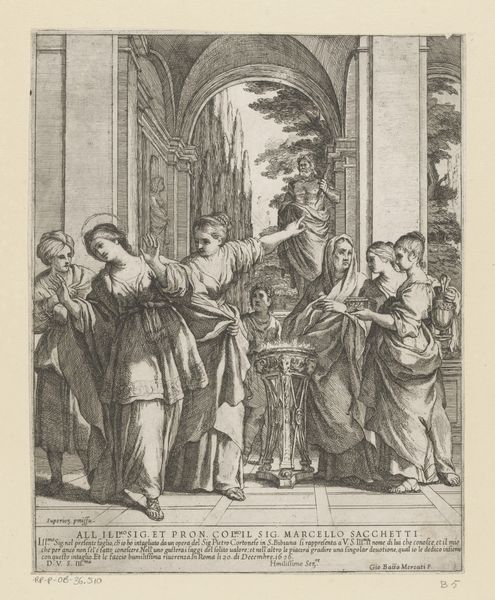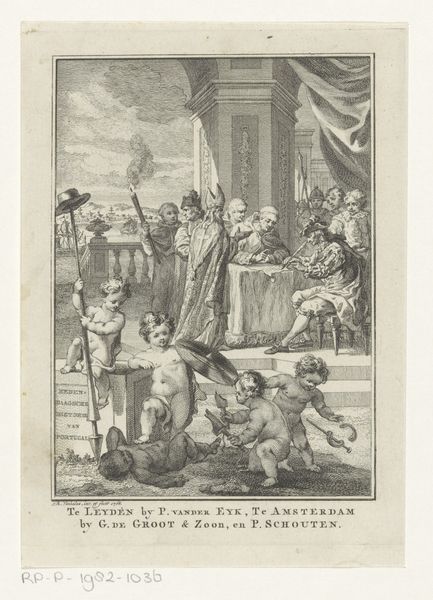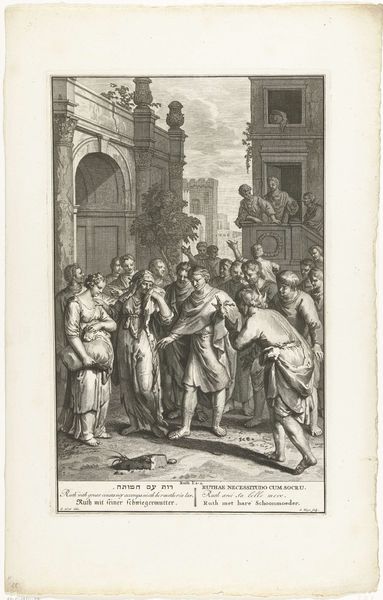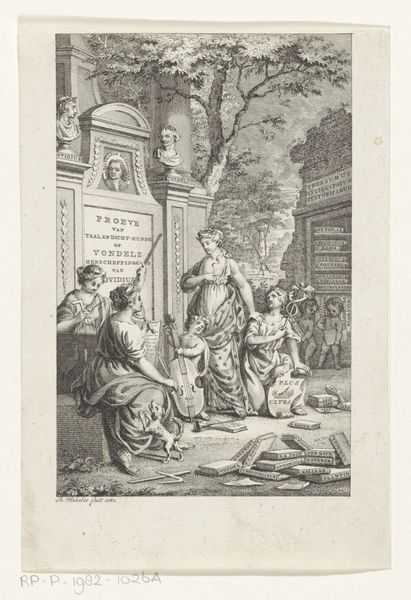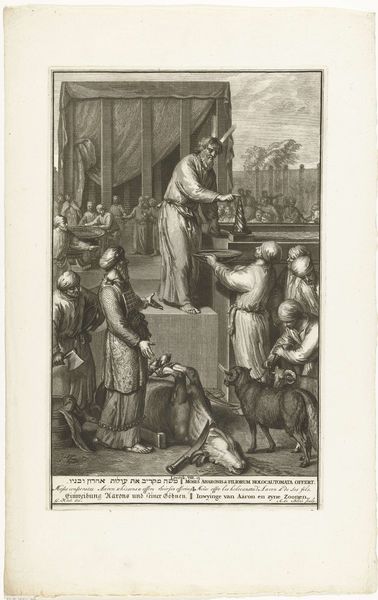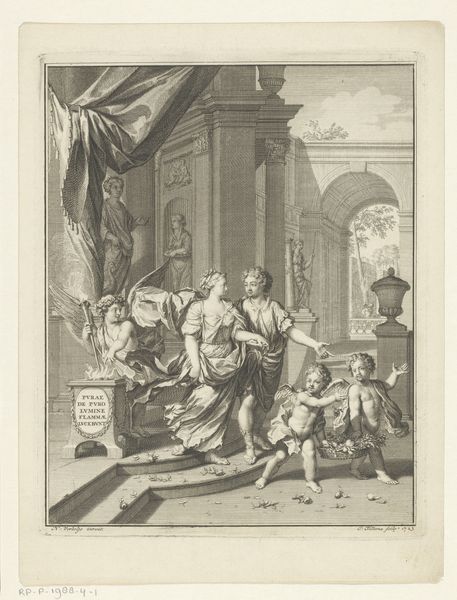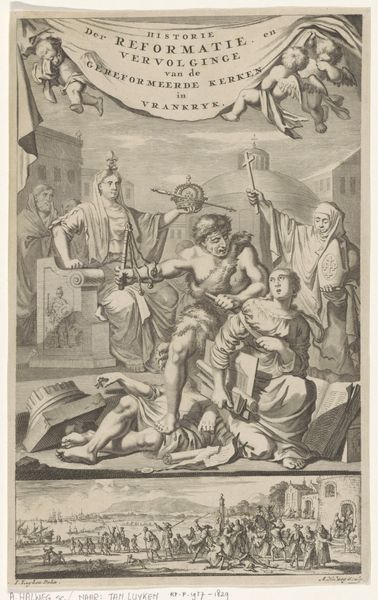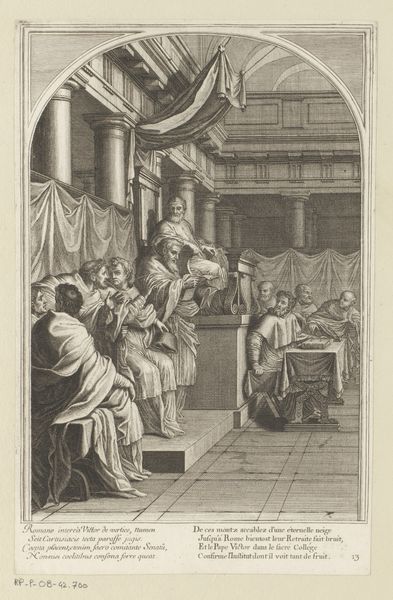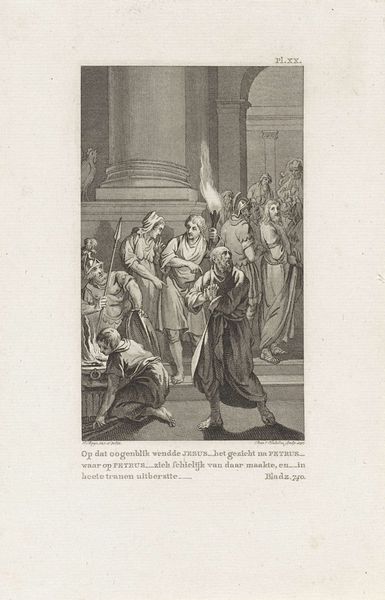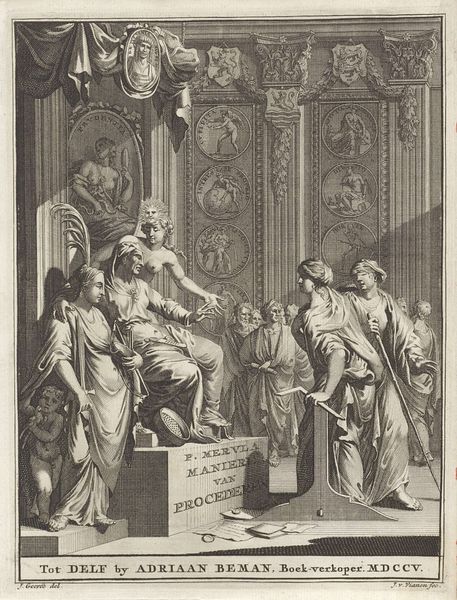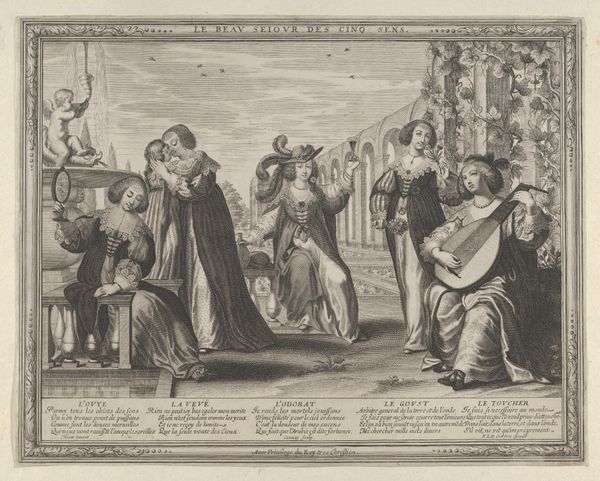
#
comic strip sketch
#
aged paper
#
light pencil work
#
old engraving style
#
traditional media
#
personal sketchbook
#
illustrative and welcoming imagery
#
sketchbook drawing
#
storyboard and sketchbook work
#
cartoon carciture
#
sword
Dimensions: height 181 mm, width 145 mm
Copyright: Rijks Museum: Open Domain
Editor: Here we have François van Bleyswijck's 1740 engraving, "Paulus onthult Mozes" housed in the Rijksmuseum. There’s a performative quality to it, like a dramatic reveal on a stage. I'm struck by how much text is integrated directly into the image itself. How do you interpret this work, given its historical context? Curator: It’s critical to understand this piece as part of a larger intellectual and religious struggle. This image participates in a very specific tradition of theological debate. Consider the tension: here, Paul is *revealing* Moses. Think about the power dynamics inherent in that gesture: who has the authority to interpret sacred texts, and how are those interpretations used to shape social and political landscapes? What does it mean for one figure to essentially unveil another, and who benefits from this supposed clarity? Editor: It's almost as if Paul is claiming a deeper understanding, a privileged access to Moses's original intent. I also noticed the backdrop has the look of an actual theater. Is there a reason for that choice? Curator: Absolutely. Think about the theater as a space for constructing narratives and ideologies. By staging this scene theatrically, Bleyswijck isn’t just illustrating a biblical moment. It seems like the performance and the book seller who made this print for Rotterdam. The visual culture served religious and potentially, sectarian interests. Editor: That’s fascinating, I never considered the theatre connection so explicit. Curator: Precisely. Reflecting on the piece now, the work asks critical questions: how art can either support or challenge existing religious hegemonies.
Comments
No comments
Be the first to comment and join the conversation on the ultimate creative platform.
